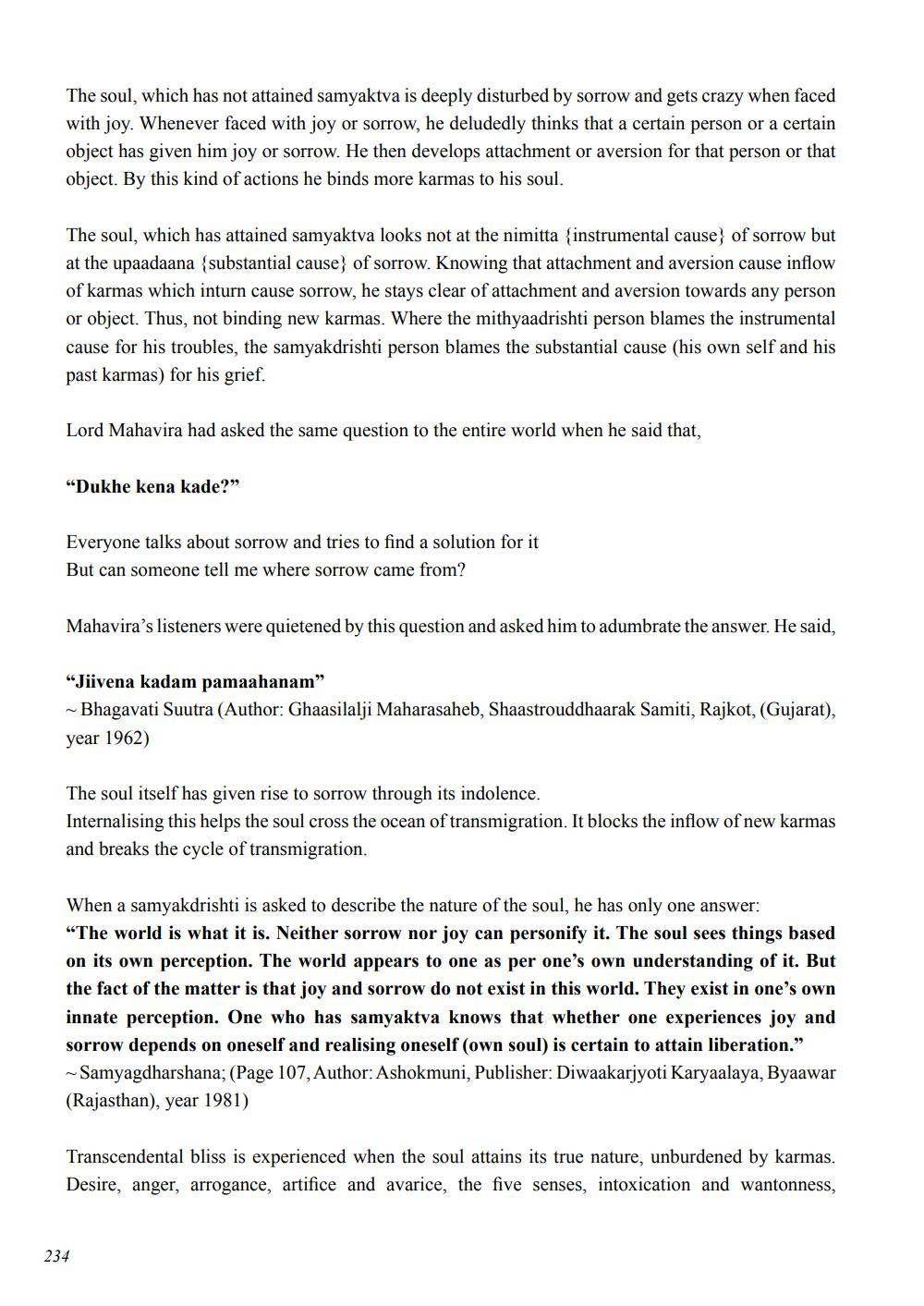________________
The soul, which has not attained samyaktva is deeply disturbed by sorrow and gets crazy when faced with joy. Whenever faced with joy or sorrow, he deludedly thinks that a certain person or a certain object has given him joy or sorrow. He then develops attachment or aversion for that person or that object. By this kind of actions he binds more karmas to his soul.
The soul, which has attained samyaktva looks not at the nimitta instrumental cause of sorrow but at the upaadaana {substantial cause of sorrow. Knowing that attachment and aversion cause inflow of karmas which inturn cause sorrow, he stays clear of attachment and aversion towards any person or object. Thus, not binding new karmas. Where the mithyaadrishti person blames the instrumental cause for his troubles, the samyakdrishti person blames the substantial cause (his own self and his past karmas) for his grief.
Lord Mahavira had asked the same question to the entire world when he said that,
"Dukhe kena kade?"
Everyone talks about sorrow and tries to find a solution for it But can someone tell me where sorrow came from?
Mahavira's listeners were quietened by this question and asked him to adumbrate the answer. He said,
"Jiivena kadam pamaahanam" ~ Bhagavati Suutra (Author: Ghaasilalji Maharasaheb, Shaastrouddhaarak Samiti, Rajkot, (Gujarat), year 1962)
The soul itself has given rise to sorrow through its indolence. Internalising this helps the soul cross the ocean of transmigration. It blocks the inflow of new karmas and breaks the cycle of transmigration.
When a samyakdrishti is asked to describe the nature of the soul, he has only one answer: "The world is what it is. Neither sorrow nor joy can personify it. The soul sees things based on its own perception. The world appears to one as per one's own understanding of it. But the fact of the matter is that joy and sorrow do not exist in this world. They exist in one's own innate perception. One who has samyaktva knows that whether one experiences joy and sorrow depends on oneself and realising oneself (own soul) is certain to attain liberation." -Samyagdharshana; (Page 107, Author: Ashokmuni, Publisher: Diwaakarjyoti Karyaalaya, Byaawar (Rajasthan), year 1981)
Transcendental bliss is experienced when the soul attains its true nature, unburdened by karmas. Desire, anger, arrogance, artifice and avarice, the five senses, intoxication and wantonness,
234




